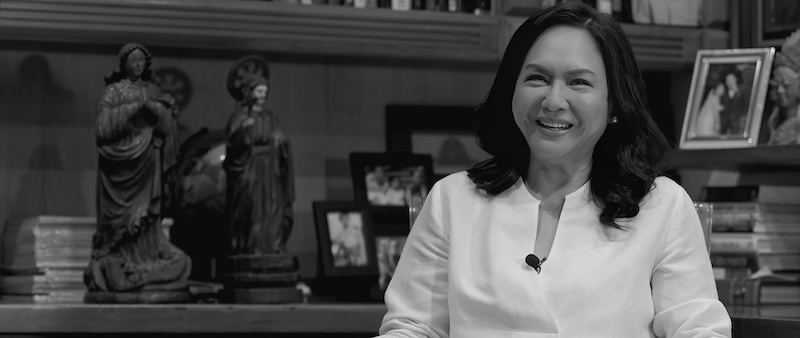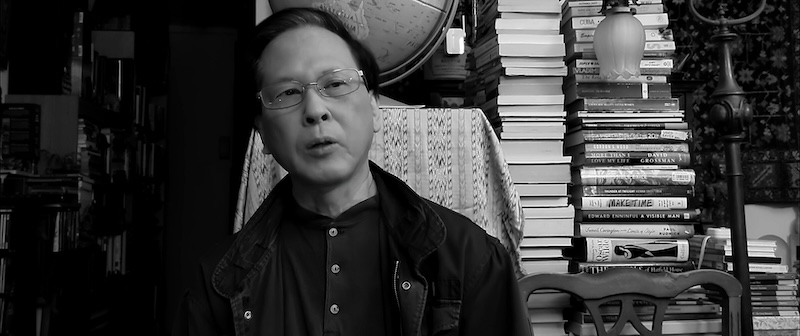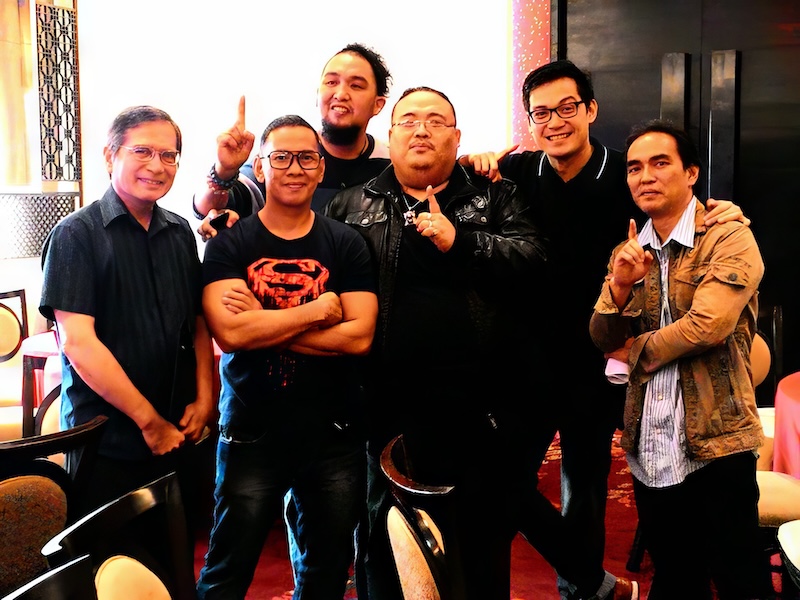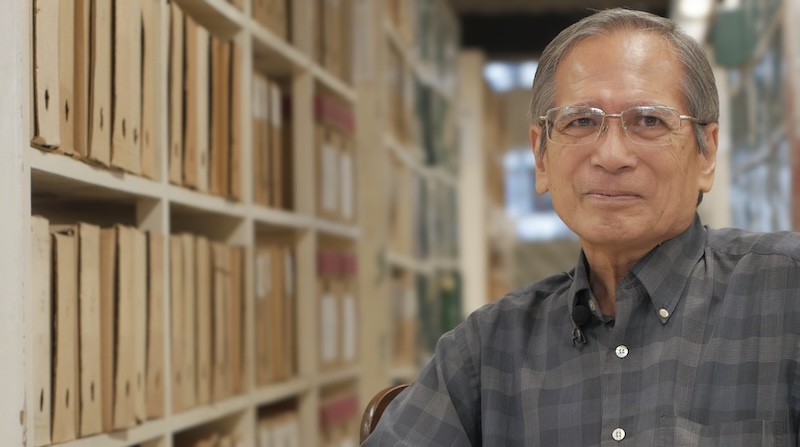The world premiere of “Del Mundo,” the documentary on Doy Del Mundo Jr., is on Oct. 21, 2025, Tuesday, 5:30pm at UPFI Film Center Cine Adarna, University of the Philippines, Diliman. Free admission
This screenwriter seems happy to stay away from the limelight. He’s prolific, but he’s not the showbiz-type celebrity that his friend, National Artist Ricky Lee, is. Doy, as he’s familiarly called, has his share of accolades. Yet, because he’s very selective with the film projects he works on, his seems less a major name in the movie industry. He is a distinguished member of the academe; he’s now professor emeritus at De La Salle University. For a time, he was head of its communications arts department; he actually established the department.
Now another filmmaker wants to give Doy the recognition he deserves. Writer/director Milo Tolentino has produced a documentary about him. Simply titled Del Mundo, the film is part biography and part important historical document on the Philippine film industry.
Two years in the making, Del Mundo isn’t exactly a textbook film that dwells on Doy’s writing style. It’s not a blow-by-blow account of how he wrote this movie or that. He does discuss how problems were resolved in writing a script. Priceless advice is also offered. He says a movie should be better than its screenplay because if the screenplay is better than the movie, you’ve got a huge problem.
Del Mundo also touches on everything that shaped the man behind the classics that continue to enthrall movie audiences. Milo’s film has the look of an expensive production. It’s as if it had been crafted by a complete crew and research team (it wasn’t). Expertly edited and splendidly photographed, the film keeps viewers constantly riveted by this person, Doy del Mundo. His story is lovingly told, and Milo’s deep admiration for the screenwriter clearly shows on the screen.
It also helps that Doy del Mundo comes across as amiable and unpretentious. He enjoyed reminiscing about his family, his parents and siblings. His father, Clodualdo de Mundo Sr., was a famous literary writer. In the film, Doy mentions the burden of carrying his father’s name and of trying to live up to it.
Also interesting are Milo’s interviews with Doy’s siblings, his daughter, and wife, Deng Quito del Mundo. It was in 1968 when Deng met 20-year-old Doy at Xavier School, while both were teaching in high school. She tells an amusing story of how she “hooked” him. As the critic, Nick Tiongson, recalled, Doy had the looks of a movie star. He was a teacher who was also a campus crush. Deng understandably had to act fast. They soon went on their first movie date—Guess Who’s Coming to Dinner, starring Sidney Poitier, Spencer Tracy, and Katharine Hepburn. Says Doy in Milo’s film, “Ginayuma ako. (I was bewitched)”

Charo Santos-Concio, star of ‘Itim’ and ‘Kisapmata,’ both co-written by Doy del Mundo and the late Mike de Leon, is among the luminaries interviewed in the documentary.
Focusing on Doy’s career, Milo interviewed his former students at De La Salle University, including advertising executive Anna Cousart-Domingo, film scholars such as Prof. Patrick Campos of UP Diliman, and luminaries like Dr. Nick Tiongson, Charo Santos Concio, Lav Diaz, Jose Javier Reyes, and screenwriter Gil Quito (Doy’s brother-in-law). Anecdotes are told with enthusiasm and candor, which makes for a breezy documentary.

Doy’s brother-in-law, screenwriter Gil Quito, with whom he collaborated on the script of ‘,’‘Merika which starred National Artist Nora Aunor and Bembol Roco
We also get to learn more about the people who played a pivotal role in Doy’s career. Back in the late 1960s, he signed up for Ateneo de Manila’s screenwriting course. Classes were to be conducted by Nestor U. Torre. Born in 1942, Torre was only six years older than Doy. I know their ages because Milo inserts basic information about the interviewee and people whose names are mentioned. It’s a useful device that quickly explains how the person figures in Doy’s life.
Doy was the only student who signed up for the course, so it was turned into a tutorial instead. For that course, he wrote two scripts. The second one, he adapted from a story that was serialized in comics, In the Claws of Brightness by Edgardo M. Reyes. Years later, this script would have a film version with a new title: Maynila Sa Kuko ng Liwanag.
Doy’s other classes at Ateneo had a considerably bigger number of students. One classmate became a lifelong friend and collaborator. It was Mike de Leon.
To help viewers get a feel of the era Doy toiled in, Milo shows us copious film clips and pictures of the movies and stars of the day. Philippine cinema in the late 1960s, Doy would say, was in the pits. “Bomba” movies were the dominant product. Milo thus bombards the screen with posters and pictures of Rosanna Ortiz and her breed. The posters of the trashy films made for an exciting montage.
By 1975, socially relevant films like Maynila marked the beginning of an era of what film scholars describe as the new cinema. Doy’s script for Maynila was chosen by Cinema Artists, a production company established by his Ateneo classmate Mike de Leon. Brocka was signed on as director, de Leon the film’s cinematographer. The movie marked the beginning of a beautiful collaborative partnership. The two would go on to co-write one classic after another: Itim, Batch ’81, Kakakabakaba Ka Ba?, Kisapmata, and Bayaning Third World.

In 2005, at the Cultural Center of the Philippines during the first CineMalaya Philippine Independent Film Festival: Doy del Mundo, Milo Tolentino, the late Siegfried Barros Sanchez (behind Milo), Emman dela Cruz, Joel Ruiz, and Ron Bryant. Milo would later formally meet Doy to consult with him about a script he was writing.
Milo Tolentino is an award-winning filmmaker himself. He first triumphed in the short film category of the 2nd CineMalaya Philippine Independent Film Festival. He was also a Gawad Urian winner, and was the first Filipino to win at the Clermont Ferrand International Short Film Festival. He also won the first SONJE Award of the Busan International Film Festival in South Korea.
I first interviewed Milo around 20 years ago, when he was still a fitness trainer. He owned a gym on the penthouse floor of the old C.O.D. building in Cubao, Quezon City. I was doing a story for Smart Parenting magazine, about fitness exercises for children. Milo was to be my resource person. At that time, he was also dabbling in photography. His stunning black and white nudes have been showcased in one-man art shows. He was also a contributing photographer for various fashion magazines. He would eventually try his luck with moving pictures.
He was formally introduced to Doy when Milo was making a film for Cinema One. According to Milo, the people at Cinema One weren’t happy with the script he wrote. Thus, his line-producer, Rica Arevalo, sought Doy’s help. “Rica was a student of Doy. And so we met with a very unassuming, soft-spoken, and very genial Doy, and gave him our screenplay,” he said.
“Doy returned the screenplay to me after a week. He made a lot of grammatical corrections and made a gentle suggestion to further flesh out the ending. He didn’t have a thing changed, he didn’t nitpick. That was very important to me because this was to be my first full-length feature film. So we presented our Doy-certified script—complete with his signature—to Cinema One. We finally got to make our film,” he said.
For the longest time, Milo hoped somebody would make a documentary about Doy del Mundo. He took it upon himself to make the film.
“I never did get into doing it because at that time, I thought time or life was infinite. Then the pandemic happened. And so I realized I was wrong. The pandemic ended, but I was left with nothing to do. The jobs and opportunities lined up for me had vanished because of the pandemic. With nothing to do, I decided to pursue the documentary,” he said.
Doy was bewildered when Milo broached the idea of a documentary. Good-naturedly, he asked Milo, “Sigurado ka? Ano ito, silent film? Bakit ako? Iba na lang. (Are you sure? Is this a silent film? Why me? Why not somebody else?)”
He wasn’t aware of his own significance, says Milo, who wasn’t that close to him yet. As he continued to mention the project to him by e-mail, Doy finally asked to meet with him. The purpose of the meeting, it turned out, was for Doy to dissuade him from doing the film. Milo was adamant. After two more meetings, he finally acquiesced.
“I think he gave in because he didn’t want to be the roadblock to my project. He said yes to this struggling filmmaker. He‘s always been supportive of his former students. He readily gave interviews. He was on-call 24-7,” he said.
Milo wasn’t a student of Doy. He says he wasn’t even a properly initiated film student. He was a fine arts photographer and fitness instructor who took a post-graduate non-credit filmmaking course at the UP College of Mass Communication. Still, Doy gave him the chance to make his film.
Del Mundo is a two-man production. Milo did all the research and extensive interviews. He conducted them as he held the camera. He collated stock footage, movie clips, and a vast collection of photos. He edited the film himself and even inserted the subtitles. To fund the project, he sought the assistance of the National Commission for Culture and the Arts (NCCA), which provided financial support. There were additional expenses, and this compelled Milo to dig into his own pocket.
Milo spent a lot of time with Doy, shooting him and wife Deng attending functions. Friends and colleagues gamely had themselves interviewed. It was all for the love for Doy. The only person who was out of reach was Mike de Leon. “He’ll never agree to be interviewed. Pustahan tayo (Wanna bet),” Doy said with a laugh.
Apparently, the director was a very private person. He rarely granted press interviews. Perhaps Milo’s next film ought to be about Mike de Leon. Milo, however, says he needs to support his art first by directing a commercially viable movie. He said he’d like to direct one for Vivamax!
As late as September, Milo was still making arrangements for the premiere of Del Mundo. It was earlier suggested to hold the screening at De La Salle University. Doy is a much-beloved faculty member there, but Doy balked at the idea. It would be too self-serving, he said. That’s Doy del Mundo for you.




